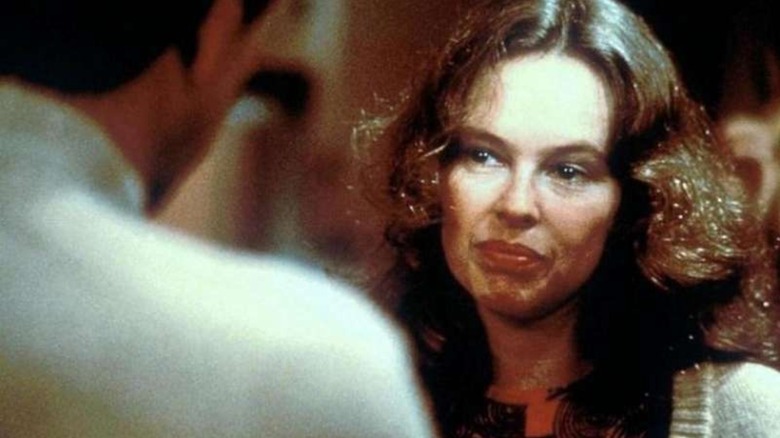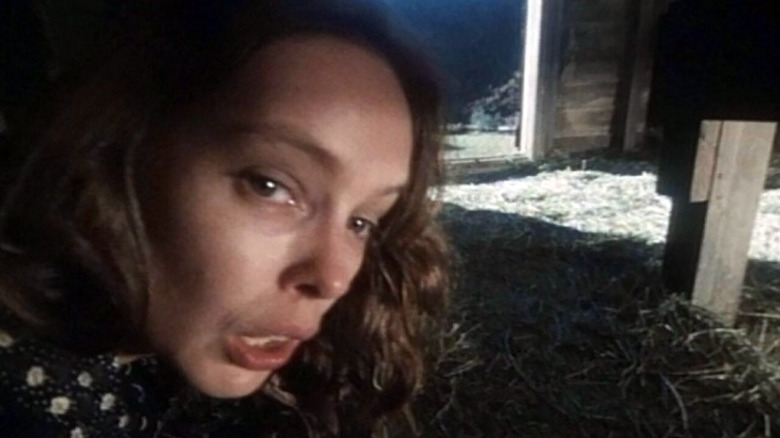Steven Spielberg's Worst Movie, According To Letterboxd Users
When Steven Spielberg was still trying to find his footing as a director, he poured everything into the low-budget films he was making in the early 1970s. Most of these projects were teleplays, which he used to experiment with techniques and improve, while aiming towards a feature debut. This dream came true in 1971 with the cult classic "Duel," a frenetic story about a traveling salesman and a diabolical truck, encapsulating Spielberg's raw talent as a storyteller. The success of "Duel" put him on the map, but it wasn't enough to fund the things he wanted to work on. Although Spielberg wanted to gradually move away from making teleplays and television movies, he had no choice but to dabble in this world to garner more credibility (while having limited artistic freedom). A string of half-hearted attempts mark this period, including 1973's "Savage," which the director famously did not jive with at all, but circumstances compelled him to get involved anyway.
That said, not all Spielberg-helmed tele-movies were made with such languid disinterest. His second made-for-television movie, "Something Evil," is a horror story that genuinely appealed to him due to its suffocating, ominous overtones. It was a non-contractual production, making it a rare foray into something Spielberg wanted to stab at. We get to see some interesting directorial qualities here, including the tendency to let palpable tension speak for itself, along with impressive camerawork that underlines the evil lurking in the corners of the haunted house. It is, however, extremely flawed, carrying all the markers of a television movie that was made between several odd jobs at Universal (which Spielberg was juggling all at once). If you squint hard, you'll find some thematic seeds that bloom beautifully down the line in Tobe Hooper's "Poltergeist," which is based on a story written by Spielberg himself.
Now, it is no surprise that "Something Evil" doesn't hold a candle to Spielberg's astounding body of work (or even his feature debut, which is more representative of his artistic strengths than this 1972 horror). Is this Spielberg's worst film? It is hard to say, as "1941" exists (alternatively, it can also be interpreted as a madcap masterpiece!), along with "The BFG," which feels uncharacteristically contrived and wooden for a Spielbergian children's fantasy. But we were to ask the good folks at Letterboxd, "Something Evil" is the director's lowest-rated feature on the website, sporting a measly 2.5 out of 5 despite some positive reviews.
Spielberg's Something Evil is terribly dated, but impressive on a technical level
If you take a cursory look at what "Something Evil" entails, it becomes immediately clear that this is a standard haunted house flick (and there's nothing wrong with that). Newly married couple Paul (Darren McGavin) and Marjorie (Sandy Dennis), along with their two children, move into an idyllic ranch in rural Pennsylvania, where the haunting begins as soon as they set foot on the premises. The nature of the haunting is rather bland, replete with supernatural gusts of wind and rapidly deteriorating interpersonal relationships, where the already-fragile Marjorie is pushed to her limits. Demonic possession and satanic imagery made their due appearance, as the occult was all the rage in haunting-centered films at the time, especially after the widespread success of "Rosemary's Baby." As Marjorie becomes more preoccupied with a sigil seemingly etched to ward off evil, the true nature of the ranch is unveiled, which seems to be hiding...something evil (sorry).
There's a clumsiness to the storytelling that Spielberg would end up expertly honing in just a few years, but "Something Evil" is undoubtedly an artistic sandbox where most of its core ideas emerge as unremarkable. It is also pretty dated in its approach to genre tropes, which is to be expected of a television movie that was made with a tight budget, offering Spielberg limited freedom to exercise his vision. Although the film isn't nearly as tense as it should've been, there's something truly off-kilter about Marjorie's descent into madness, which Spielberg captures with evocative imagery and impressive camerawork. At one point, we see a writhing mass of red pulp inside a jar, meant to represent a twitching fetus left to its own devices. Such gnarly imagery enlivens a mostly predictable film, thanks to Spielberg's knack for conveying sentiments of fear through stunning visual mastery (an instinct that culminates beautifully in "Jaws").
While "Something Evil" isn't good horror, it is an important piece of filmmaking nonetheless, as it allows us to chart a path straight to Spielberg's most celebrated films that incorporate horror along with elements of familial drama. There are some really cool discoveries to be made if you look closer, such as his handling of the demonic presence through clever suggestion alone, or the quick Spielberg cameo (!!) in a scene alongside Carl Gottlieb, who co-wrote the screenplay for "Jaws" a few years later. So, if you're fond of Spielberg's filmmaking ethos and wish to see some of his earliest ideas in action, "Something Evil" deserves a one-time watch.

